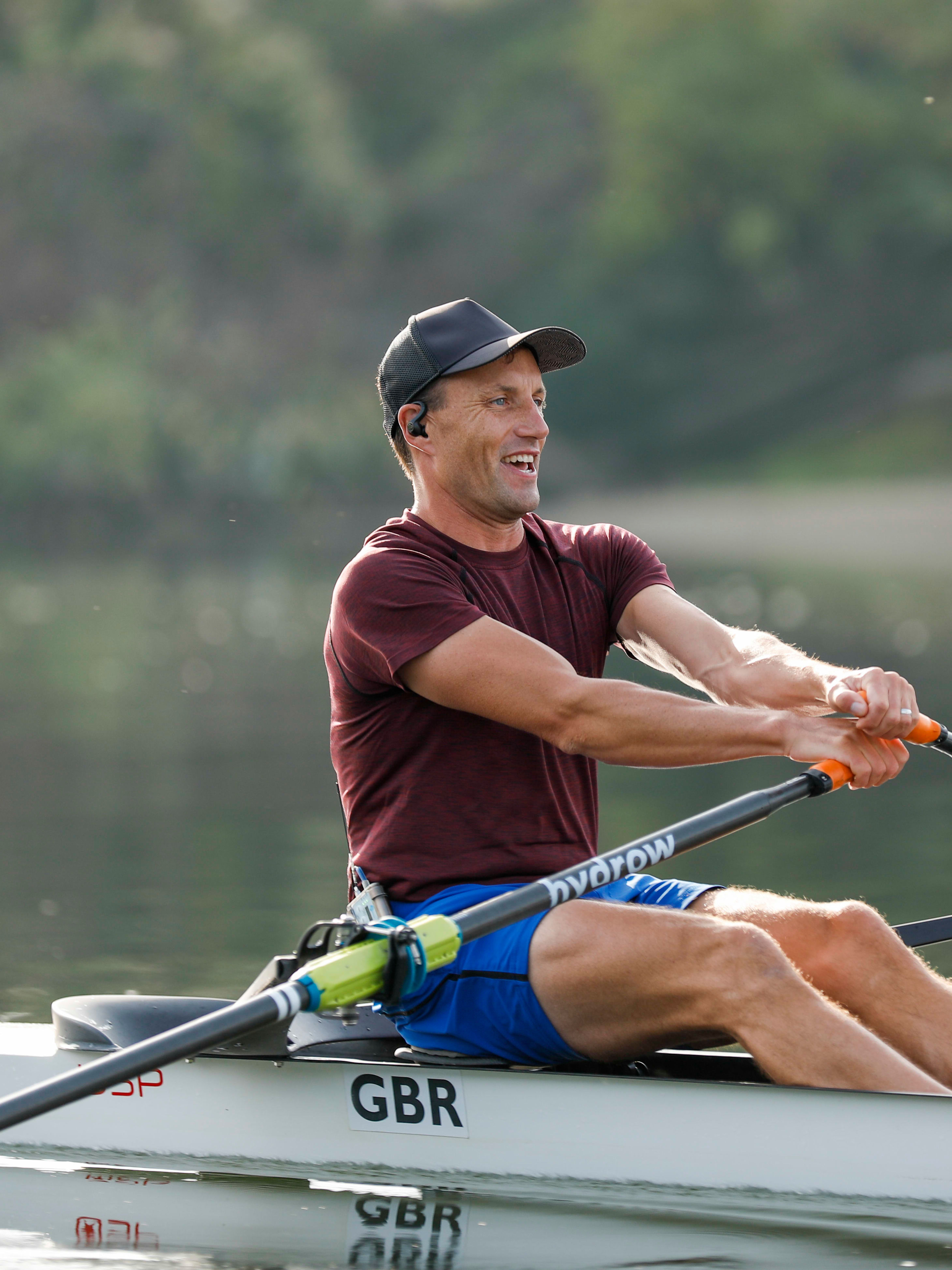How to Get Better at Rowing: 15 Tips to Improve Your Endurance and Technique
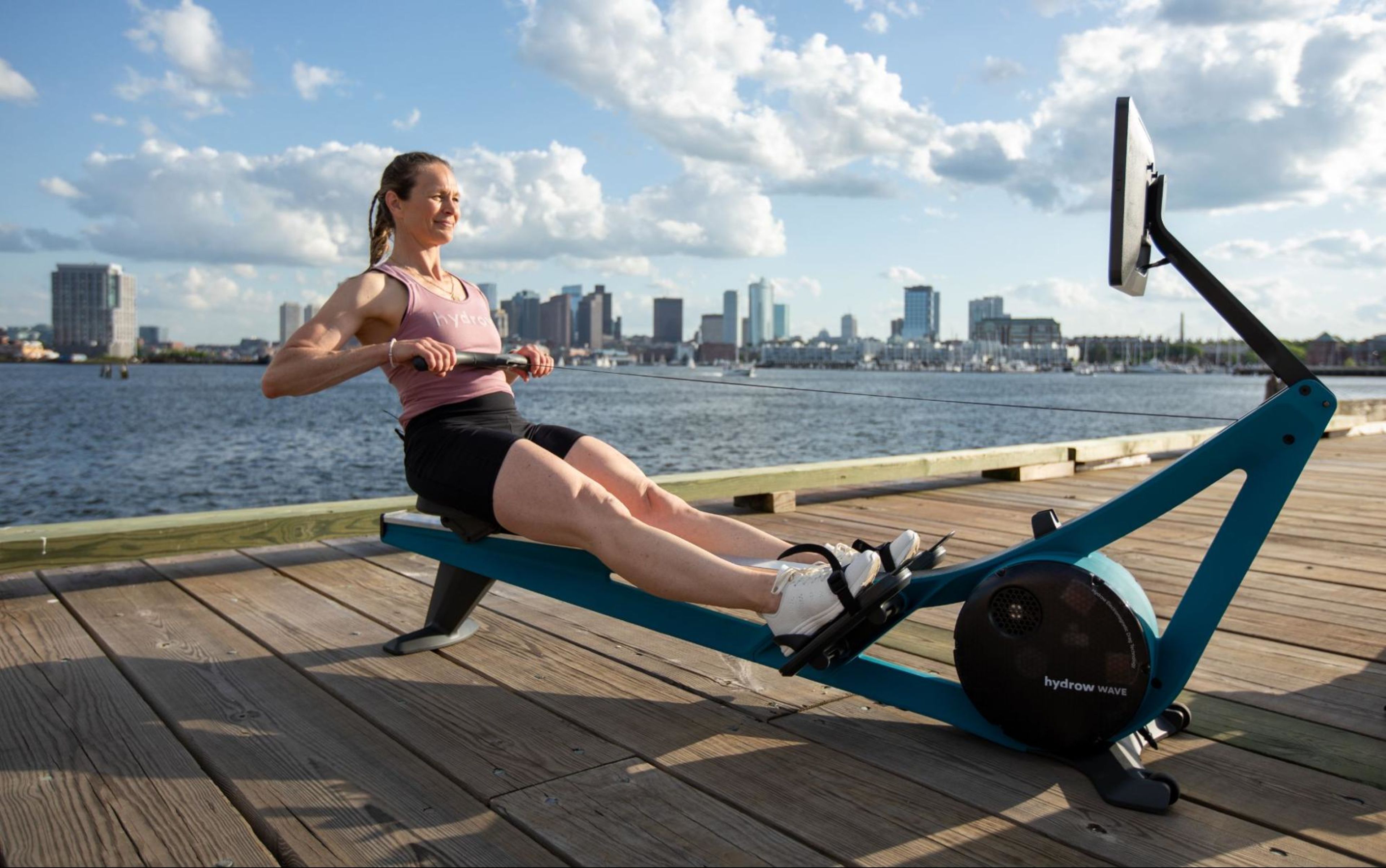
Rowing has surged in popularity as a full-body workout that combines strength and cardio in one smooth motion. Whether you're looking to improve your overall fitness, target specific muscle groups, or enhance your endurance, rowing can be a highly effective way to reach your goals.
In this blog, we'll explore practical advice from Hydrow Athletes that will help you take your rowing skills to the next level. Whether you're a beginner or seasoned rower, these 15 tips will give you the edge to enhance your performance and technique over time:
Let’s get started!
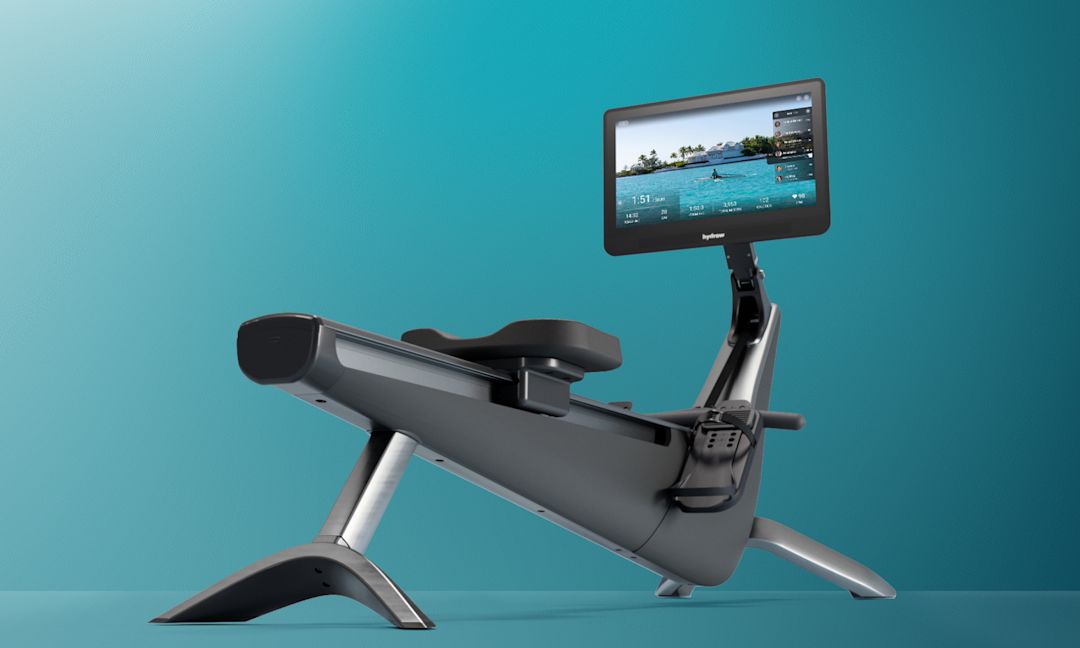
Holiday savings are here
Bring home our award-winning rowers at the best prices of the year.
1. Perfect your posture
Proper posture is the foundation of effective rowing. Your legs provide most of the driving force during the rowing stroke, so think of your core as the connection between those strong legs and your arms. Good posture enables your core to transmit this power more effectively, helps prevent injury, and ensures you’re using the right muscles as you row.
Make sure your back is straight, your shoulders are relaxed, and your core is engaged. You should also focus on maintaining a neutral spine, avoiding slouching.
Why it’s important:
Proper posture will help you get the most out of each rowing stroke, prevent strain or potential injury, and help strengthen your core even more.
Pro tip:
Set up a mirror or camera so you can see your rowing form from the side to check on your posture.
Related blog: How to Row Correctly on a Rowing Machine
2. Focus on the Drive phase
The Drive is the phase in the rowing stroke that provides all of the power and entails three motions:
Pushing off the footplates using your legs
Swinging your body slightly backwards
Using your arms to pull the handle to your sternum
Ensure you are driving primarily with your legs and that you’re consistently keeping the sequence of legs, body, arms, arms, body, legs. The motion should feel strong and fluid.
Why it’s important:
Focusing on the Drive phase (and in particular, the rowing sequence) will maximize your power throughout the whole rowing stroke and enable you to row faster and more efficiently.
Pro tip:
Start by focusing on the “legs, body, arms” sequence to ensure you're driving properly. Try incorporating a legs-only drill to make sure you are starting each stroke in the correct way.
3. Use your core
Your core plays a key role in maintaining balance and stability as you row—as well as adding power to the stroke. Engaging your core will protect your back, allowing you to generate more power from your legs and arms. Then, during the second part of the Drive, as you swing your body open, you will use the large muscles in your core to drive the handle.
Why it’s important:
A strong core improves your posture and helps with overall endurance. It also provides a stable base for other movements, ensuring power is evenly distributed throughout your body.
Pro tip:
Incorporate core-strengthening exercises into your routine, like planks or Russian twists, to build endurance.
4. Breathe correctly
Rowing is an intense cardiovascular workout, and proper breathing is essential for maintaining your stamina. Sync your breathing with your stroke: Inhale during the Recovery phase, and exhale on the Drive. For most people, this rhythm feels very natural.
Why it’s important:
Proper breathing helps oxygenate your muscles and prevents you from getting winded too quickly. It also helps you get into a good flow as you row, making each of your strokes strong and consistent.
Pro tip:
Try to notice when you breathe out and check that it is in time with the finish of the stroke. Let your breath come naturally on the recovery.

Low-impact, high reward.
Build lasting strength on a rower designed to protect your joints.
5. Don’t go for a personal best every time
As you start rowing more consistently, you’ll notice your fitness, strength, and technique improving dramatically, and you may be rowing personal-best distances and times regularly. This may be great fun and very motivational, but remember you also need easy sessions and rest days. So, enjoy a great PB row when it comes, but don’t always make it your focus.
Why it’s important:
Allowing yourself to not feel pressured that every row needs to be your absolute best will keep you motivated and allow you to enjoy each workout for what it is. Trust the process of rowing regularly and mixing in a variety of easy, medium, and harder rows. This will ultimately help keep you coming back so when you want to go get a personal best, you will be ready.
Pro tip:
Save personal best for special rows when you really want to see what you’ve got!
6. Master the Recovery phase
The Recovery phase is often overlooked, but it’s essential for setting up your next stroke. During the Recovery phase, you’ll want to focus on relaxing and getting ready for the next Drive. Getting the three movements of the Recovery phase in proper sequence will help you do this efficiently: Your arms should extend first, followed by your body, then your legs.
Why it’s important:
Mastering the Recovery phase helps you row in a rhythm, prevents you from getting fatigued too early in your rowing session, and allows you to stay in control.
Pro tip:
Think of the recovery as a chance to reset your form for the next Drive. Keep it controlled, not rushed.
7. Strengthen your legs (and everything else!)
The rowing stroke uses 86% of your body’s muscles, and while your legs are key in producing most of your power, they can’t deliver that power effectively to the handle without a strong core and arms. So, you can improve your rowing significantly by incorporating strength training into your fitness routine.
Why it’s important:
Strength training helps strengthen and balance your muscles while bringing variety to your workout routine to keep it fresh and interesting.
Pro tip:
Balance your strength training program with a mix of movements that complement the rowing stroke and those that provide a motion that’s not used in the rowing stroke.
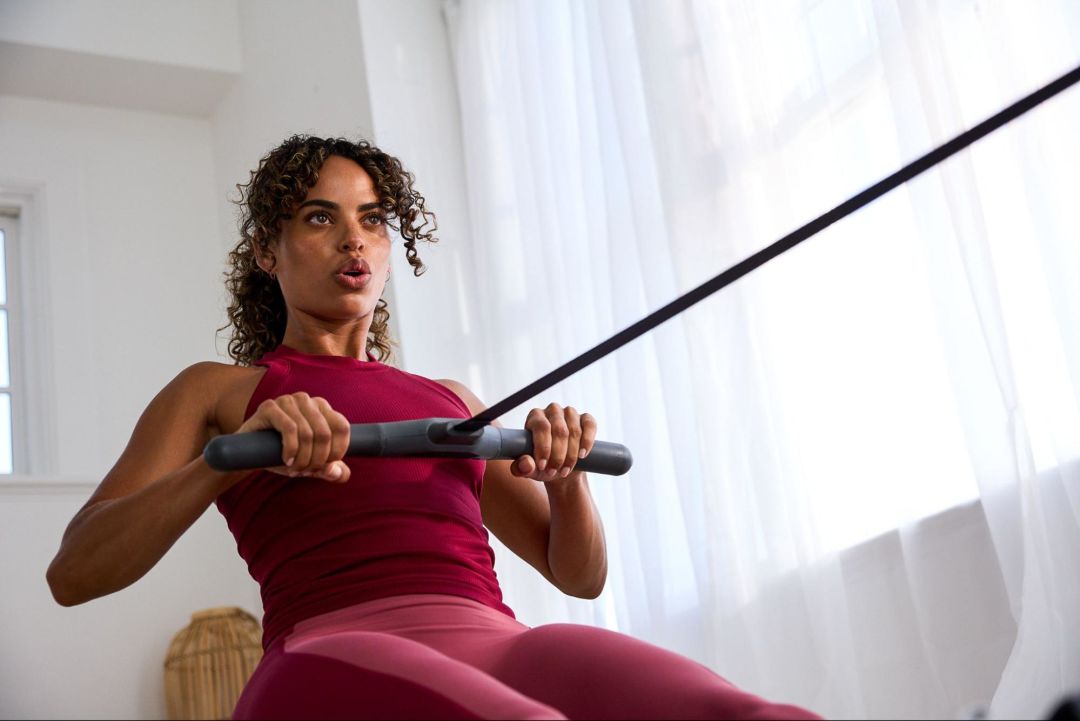
Efficiency for the win.
Work 86% of your muscles in just 20 minutes of rowing with Hydrow.
8. Try short rows
Rowing is a very efficient workout compared to other common workout types, such as running or working out on an exercise bike, treadmill, or elliptical. So, if you are pressed for time, don’t feel like you always have to put in a long session to reap the rewards. Know that you can still get a very effective and beneficial workout in just 10 minutes if that’s all that’s available to you that day.
Why it’s important:
Most of us are not professional athletes. We have busy lives and some days, a longer workout is just not in the cards. With rowing, you can get one of the most effective workouts done when your schedule won’t allow for a longer workout.
Pro tip:
Stay on track with your fitness goals by keeping your workout streak going, even if you’re doing a shorter workout than normal.
Related blog: How Long Should You Work Out on a Rowing Machine?
9. Incorporate interval training
Rowing at a consistent pace is great, but interval training—alternating between high-intensity bursts and slower recovery periods—will push your endurance and help improve your overall fitness level. If you’re feeling like you’ve mastered steady-state rowing and feel confident you can row for longer periods of time, it may be time to try intervals. This will provide a different training stress to your body that really boosts your health and fitness.
Why it’s important:
Interval training is important to activate the different energy systems that your body uses so you are training both your aerobic and anaerobic systems.
Pro tip:
Having a balanced mix of steady aerobic workouts and more taxing interval workouts will boost your fitness and keep you engaged and interested, as each workout type provides a different kind of challenge. For example, Hydrow splits workout types in three different categories—Breathe, Sweat, and Drive—so it is always easy to find the workout you are looking for.
10. Track your progress
Keep a log of your rowing workouts and monitor your progress over time. Record details like distance, time, and stroke rate to see how you're improving.
Why it’s important:
Tracking your progress helps you stay motivated and gives you a clear picture of where you can improve. It can be very motivational to look back at where you started and how you have improved.
Pro tip:
Use apps or a fitness tracker to log your workouts and analyze your data. Hydrow records all of your previous rows so you can compare stats on any row you have ever done.
Related blog: What Do the Numbers on Your Rowing Machine Mean?
11. Work on your grip
Grip is another often-overlooked aspect of rowing. Having strong grip can allow you to row a longer stroke, reduce forearm fatigue, and help you relax. You should hold the handle securely in your fingers with your thumbs relaxed and underneath the handle.
Why it’s important:
A relaxed grip reduces the risk of straining your forearms or wrists, improving your rowing efficiency.
Pro tip:
Think of making a “C” shape with your fingers. The handle should fit into that shape with your thumb underneath, but not really in contact with the handle.
Related blog: Are Rowing Machine Gloves Necessary?
12. Focus on your split time
Your split time—how long it takes you to row 500 meters—is one of the most common rowing metrics. It’s a great way to measure how you’ve improved over time, as your split time will get lower as you get fitter and improve your rowing technique.
Why it’s important:
Lowering your split time indicates increased efficiency and endurance. As you improve your rowing, you will find you can row at lower splits for longer, which can be very motivational as you recognize how you have improved.
Pro tip:
We’re going to get a little hypocritical here: Having said how important it is to monitor your progress using your split, try not to focus too closely on your split. This metric can change due to many factors, such as the goal of your workout, your relative tiredness, or sleep, or your hydration (among many other reasons). So, use your split to inform your workout, but don’t necessarily obsess over it.
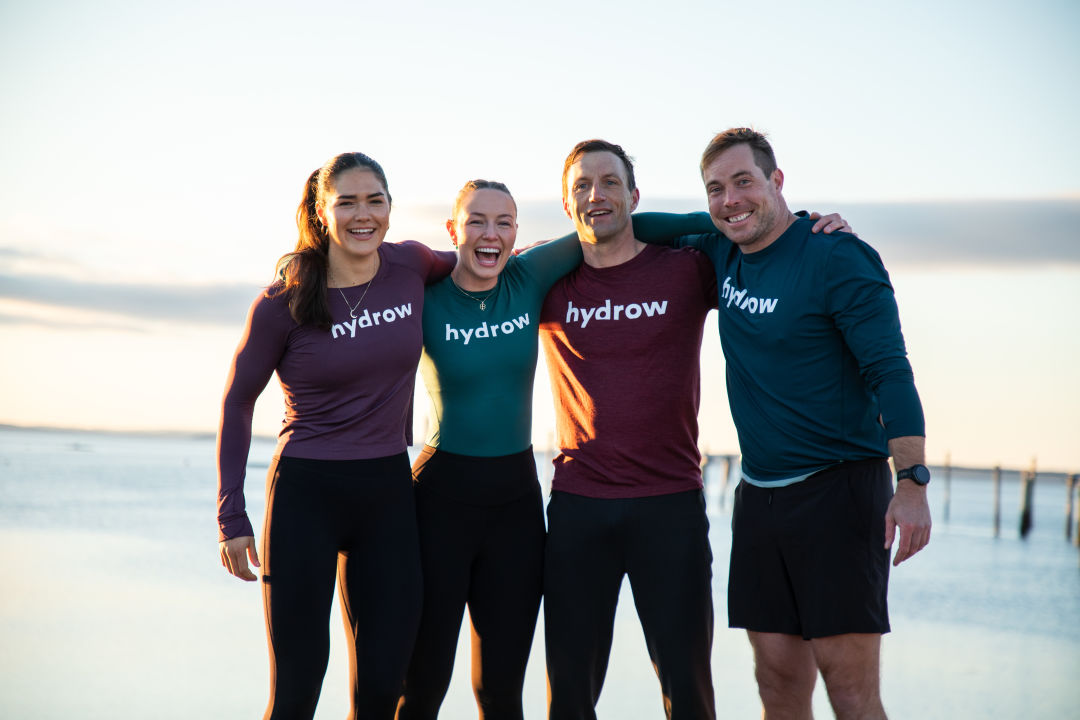
Explore Hydrow’s library of 5,000+ rowing, circuit training, yoga, Pilates, and mobility workouts.
13. Set goals
Whether you're aiming to row for a longer distance or improve your split time, setting specific goals can keep you motivated and coming back to row even on those days you’re just not in the mood.
Why it’s important:
Goals give you a tangible way to measure your progress and provide something to work toward. They keep you motivated when you need it most.
Pro tip:
Break big goals down into smaller, more manageable milestones to keep your motivation high. Also, remember to share and celebrate your achievements!
14. Stay consistent
Like any sport or exercise, consistency is key. Regular rowing workouts will help you build strength, improve technique, and boost endurance over time.
Why it’s important:
Being consistent is always going to win. It is the simplest and most challenging concept to embrace, but it always brings results.
Pro tip:
Start off slowly. It is tempting to jump all in and start rowing multiple days per week. But recognize where you are starting and build up to a regular and consistent workout routine.
15. Enjoy the process
Rowing is unique in that it provides an almost endless opportunity for improvement. There is a basic technique that can be learned very quickly and easily. After that, the nuances of the sport mean even Olympians are constantly working on improving their technique. So, enjoy the process of learning and practicing knowing that you can always be challenging yourself. It what keeps rowers motivated and constantly coming back
Why it’s important:
Enjoying the learning process means you never need to get bored. You can challenge yourself to improve to the level you want to. This process will keep you interested in rowing much longer than activities that have little or no room for improvement.
Pro tip:
Once you have the basic technique down, use the very enthusiastic rowing communities online or with the Hydrow Athletes to help you work on improving your technique and skills further.
Improve your rowing technique with Hydrow
Improving your rowing technique takes time, patience, and dedication. By focusing on form, strength, and endurance, you’ll experience the many benefits that rowing has to offer, whether you’re a beginner or a more experienced rower.
If you’re considering adding a rowing machine to your home, Hydrow brings more than just equipment—it brings total-body results and intelligent training.
Each stroke works 86% of your muscles, delivering an efficient, immersive workout—and with real-time feedback and personalized scores, Hydrow helps you help you row smarter, build strength, and stay motivated. Just 20 minutes a day is all it takes to move with purpose, boost energy, and see results that last.
Hydrow’s workouts are led by world-class and Olympic Athletes and filmed on real water in beautiful locations around the world. Whether you’re rowing or cross-training with yoga, Pilates, strength, mobility, or circuit workouts, you’ll find movement that motivates—and keeps you coming back.
Ready to train smarter? Explore what Hydrow can do for you.

Real strength keeps moving
Learn how working out with Hydrow can help support a fuller, more active life.
